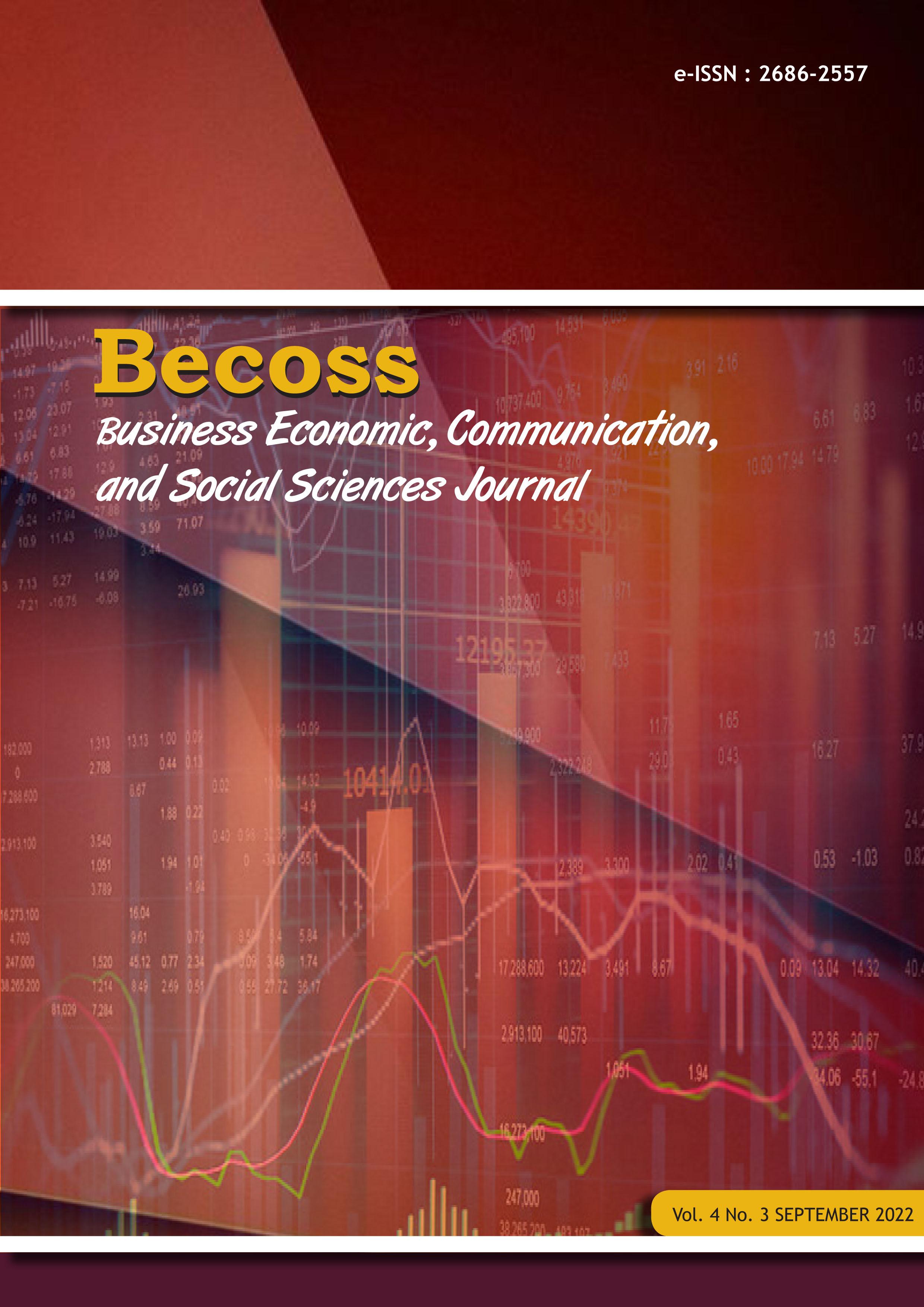Value Chain Analysis to Identify Internet of Things Use Cases in The Indonesian Pharmaceutical Industry
DOI:
https://doi.org/10.21512/becossjournal.v4i3.8456Keywords:
Internet of Things, Value chain analysis, Pharmaceutical industry, Use cases, Coronavirus pandemicAbstract
The coronavirus pandemic has not only boosted the revenue of many pharmaceutical companies, it has also boosted their reputation. The value of pharmaceutical innovation is unquestionable, after the COVID-19 vaccine was developed at such a rapid pace. Besides, the coronavirus pandemic has exposed weakness in the industry's global supply chains and while consumer confidence is recovering, it is far from normal. Businesses in this sector are likely to face a number of major risks through the end of the year. The purpose of this study is to provide insights regarding challenges faced by the Indonesian pharmaceutical industry as driver to conduct value chain analysis in order to identify the prioritized internet of things use cases so pharmaceutical companies in Indonesia will be able to drive both top-line and operational efficiencies.
References
Canali, J., et al., (2022). IoT Enterprise Survey: Summary Report – 2022. Informa PLC. 3-42.
Cheng, T., et al., (2013). Automating Task-Level Activity Analysis through Fusion of Real Time Location Sensors and Worker’s Thoracic Posture Data. Computing in Civil Engineering- Proceedings of the 2013 ASCE International Workshop on Computing in Civil Engineering, 629-636.
Chui, M. (2021). The Internet of Things: Catching up to an Accelerating Opportunity. McKinsey & Company. 16-41.
Grover, Mohit et al., (2019). The Future of Life Sciences and Health Care in Asia Pacific: Embrace, Build, and Grow. Deloitte Southeast Asia Ltd. 18-46.
Gubbi, J., et al., (2013). Internet of Things (IoT): A Vision, Architectural Elements, and Future Directions. Future Generation Computer Systems, 1645-1660.
Gurria, Angel. (2012). The Emergence of Global Value Chains: What Do They Mean for Business. G20 Trade and Investment Promotion Summit. Mexico City: OECD
International Telecommunication Union (2012). Y.2060: Overview of the Internet of Things. Retrieved February 24, 2022, from https://www.itu.int/rec/T-REC-Y.2060-201206-I
Laplante, Phillip A. et al., (2018). Building Caring Healthcare Systems in the Internet of Things. IEEE Systems Journal. 3030-3037.
Lucero, Sam (2021). Domain Market Brief: Assessing the Value Chain in Connected Heathcare. Informa PLC.4-11.
M, Deepika et al., (2019). AI and ML Powering the Agents of Automation: Demystifying, IOT, Robots, ChatBots, RPA, Drones & Autonomous Cars – The New Workforce Led Digital Reinvention Facilitated by AI & ML and Secured through Blockchain. BPB Publications.
Ong, M., & Builta, J., IoT Application Analysis, Continuous Glucose Monitors – 3Q21. Omdia. 4-37.
Porter, Michael E. (1985). Competitive Advantage: Creating and Sustaining Superior Performance. New York.: Simon and Schuster.
Rehak, A. et al., (2019). IoT Enterprise Insight Survey 2019/2020 – Asia-Pacific. Informa PLC.4-41.
Sehlstedt, Ulrica et al.,(2021). Now is the Time for Healthcare Providers to Get into IoT: Opportunities and Path Forward. Arthur D. Littel Luxemburg S.A. 4-10.
Taylor, Karen et al., (2018). Medtech and the Internet of Medical Things: How Connected Medical Devices are Transforming Health Care. Deloitte LLP. 4-48.
Downloads
Published
How to Cite
Issue
Section
License
Copyright (c) 2022 Business Economic, Communication, and Social Sciences (BECOSS) Journal

This work is licensed under a Creative Commons Attribution-ShareAlike 4.0 International License.
Authors who publish with this journal agree to the following terms:
- Authors retain copyright and grant the journal right of first publication with the work simultaneously licensed under a Creative Commons Attribution License - Share Alike that allows others to share the work with an acknowledgment of the work's authorship and initial publication in this journal.
- Authors are able to enter into separate, additional contractual arrangements for the non-exclusive distribution of the journal's published version of the work (e.g., post it to an institutional repository or publish it in a book), with an acknowledgment of its initial publication in this journal.
- Authors are permitted and encouraged to post their work online (e.g., in institutional repositories or on their website) prior to and during the submission process, as it can lead to productive exchanges, as well as earlier and greater citation of published work.
USER RIGHTS
All articles published Open Access will be immediately and permanently free for everyone to read and download. We are continuously working with our author communities to select the best choice of license options, currently being defined for this journal as follows: Creative Commons Attribution-Share Alike (CC BY-SA)






